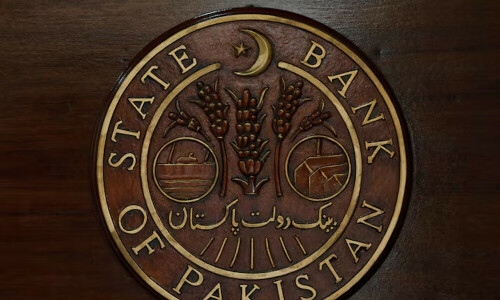State Bank of Pakistan Expected to Maintain Key Interest Rate
A recent poll indicates that the State Bank of Pakistan (SBP) is anticipated to maintain its benchmark interest rate at 12% during its upcoming monetary policy announcement on Monday. This decision follows the SBP’s unexpected pause in rate cuts at its previous meeting, which surprised many market observers due to geopolitical uncertainties and concerns about the inflation outlook.
Since April 23, the risk premium between Pakistani and U.S. debt has risen by nearly 200 basis points, exceeding 850 bps. This increase reflects a higher borrowing cost for Pakistan.
Analyst Expectations
The survey, which included fourteen analysts and investors, revealed that nine participants predict the central bank will maintain the current policy rate. Meanwhile, three analysts foresee a 50 basis point reduction, and two anticipate a more substantial 100 basis point cut.
The International Monetary Fund (IMF) suggests that Pakistan’s economic expansion is likely to remain relatively stable.
Prior to its March decision, the SBP had reduced the interest rate by a cumulative 1,000 basis points from a record high of 22% since June. The central bank cited potential price increases, including those resulting from increased U.S. tariffs, as a reason for holding the rate steady.
However, several analysts still anticipate that the SBP will resume its easing cycle later this year to boost lending activity and foster economic expansion.
Factors Influencing Monetary Policy
Ahmad Mobeen, a senior economist at S&P Global Market Intelligence, suggests that the central bank will likely adopt a cautious approach due to the evolving trade landscape, persistent core inflation, and an impending review by the International Monetary Fund (IMF).
The IMF is scheduled to assess Pakistan’s $7 billion bailout program on May 9 and determine whether to release the initial $1 billion tranche. Additionally, discussions will be held regarding a new $1.3 billion loan to bolster climate resilience.
Pakistan’s inflation rate reached 0.7% in March, marking its lowest level in almost ten years.
The Ministry of Finance estimates that inflation for April will be between 1.5% and 2%, while the central bank projects average inflation to range from 5.5% to 7.5% for the fiscal year concluding in June.
Sana Tawfik, Head of Research at Arif Habib, suggests that a “measured” rate reduction on Monday could bolster economic recovery without jeopardizing stability, considering the significant disparity between interest rates and inflation, as well as the “improving but vulnerable external accounts.”
A research house anticipates that Pakistan’s inflation rate will decrease further to below 0.5% in April 2025.
Amreen Soorani, Head of Research at Al Meezan Investments, emphasizes the need for increased foreign exchange reserves, ideally reaching the central bank’s target of $14 billion by June, before resuming monetary easing. The current reserves of $10.5 billion are sufficient to cover less than two months of imports.



Comments (0)
No comments yet. Be the first to comment!
Leave a Comment